Physics
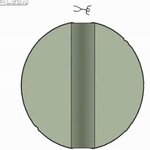
I just saw the most annoying video about an interesting physics question. Apart from the over the top stereotypical German (supposed to be funny or is he for real?) and arrogant “look how clever we physicists are” attitude, the most annoying is that the really interesting stuff about the question isn’t even mentioned. Arrrggg - how can one be so ignorant?
As he mentions toward the end of the video – if you make it that far without smashing the screen – falling through a tunnel drilled all the way through the center of the earth to the other side results in a so called harmonic motion (…
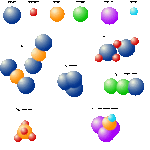
The building blocks of matter:
Molecules: />
Many of the ancient Greek philosophers believed that allsubstances were composed of tiny particles or atoms; but it was not until the nineteenth century that this idea developed into a useful theory for explaining some of the chemical and physical properties of matter.
In 1808, the English chemist, John Dalton ( 6 September 1766 – 27 July 1844), produced experimental evidence to show that chemical compounds consist of molecules which are groups of atoms of various elements united in the same simple numerical proportion…
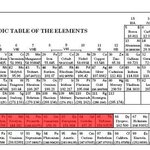
Whenever I try to explain something about particle physics to a layman, I run into the problem of mass/energy units. A Giga-electronVolt is not something you may expect people to be familiar with, and on the other hand it is not appealing to explain directly how it is defined: "if you take an electron and accelerate it by passing it through a potential difference of one billion Volts, that's the energy it has at the end: one GeV": this distracts the listeners by forcing them to focus on electrostatics, with the potential outcome that the conversation may diverge due to additional questions,…
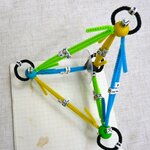
The idea for this blog was dead simple. In my second blog at Science 2.0, "Quaternions for a Third Grader", I showed of my clay and pipe cleaner model of quaternion multiplication. A few months ago, David Halliday and I started talking about the finite group Q8, which over the real numbers becomes the quaternions. David pointed out my tetrahedron was half the cube it needed to be to represent Q8. That was the idea for the blog: make a cube to represent that finite group.
It was quite the challenge to make the tetrahedron out of clay an pipe cleaners. The structure is rather fragile. A…
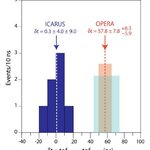
The ICARUS collaboration - operating a neutrino detector sitting not far from the OPERA experiment in the underground Laboratori del Gran Sasso in Italy - produced a refutation of the superluminality of neutrinos a while ago. That refutation was based on studying the energy spectrum of the neutrinos in the CNGS beam, coming from CERN through a trip of 700 km under the Earth's crust: superluminal neutrinos should have lost some energy due to electroweak radiation, which was not borne out by the data.
The early analysis was only a partial refutation, because one could conceivably argue that…

Measurement of the neutrino velocity with the ICARUS detector at the CNGS beam
http://arxiv.org/ftp/arxiv/papers/1203/1203.3433.pdf "_The expected time of flight difference between the speed of light from CERN to ICARUS and the actual position of the vertex of the LAr-TPC events has been neatly analysed. The result is compatible with the simultaneous arrival of all the 7 events with the speed of light and not compatible with respect to the result reported by OPERA"
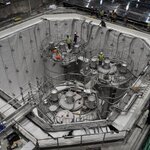
The Daya Bay Reactor Neutrino Experiment has discovered a new type of neutrino oscillation in which the particles appear to vanish as they travel. The rate of oscillations was much larger than many scientists had expected, which could open the gateway to a new understanding of fundamental physics and may eventually solve the riddle of why the universe today is dominated by matter as opposed to antimatter.
Neutrinos can be one of three types, which physicists call flavors. Owing to their physical – quantum mechanical – nature, neutrinos can mix or oscillate between flavors and the rate of…

I enjoyed Johannes Koelman's blog, "Velocity: Stuff That Doesn't Add Up." If you haven't read it, please consider doing so. I will review just the math here. There was a technical point that probably flew over many a reader's head. When discussing the elegance of the Lorentz relativity approach, he mentions a hyperbolic tangent. Hyperbolic trig functions used to cause me hypertension. With a little math and a few pictures, gone is my fear. Hopefully the reader will feel these strangers are not so strange after reading this blog.
Galileo Velocity Roundup
Galileo gazing at ships…
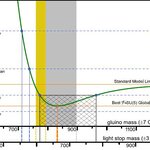
It is a gloomy winter for most SUSY phenomenologists: as they sit and watch, the LHC experiments continue to publish their search results for Supersymmetric particles, producing tighter and tighter direct bounds on the masses of squarks and gluinos for a variety of possible choices of the many free parameters defining the models under test. It looks as if the general feeling is "Today it's your preferred model going down the drain, tomorrow it might be my own".
To a few others, however, the LHC data appears instead to provide feeble but increasing hopes for a confirmation of their favoured…

If 2011's strangest result was seeing neutrinos moving in excess of the velocity of light, how could 2012 top that. But an even stranger experimental result has come from Berezhiani and Nesti from the University of Aquila in Italy , who claim to have found neutrons oscillate into Mirror Neutrons, and thus disappear from the ultra cold neutron traps. Mirror Matter is a theory of dark matter, in which every particle from the standard model is has Mirror Matter copy with left and right reversed, in order to return to parity conservation. Matter Matter has is own copy of each of the standard…